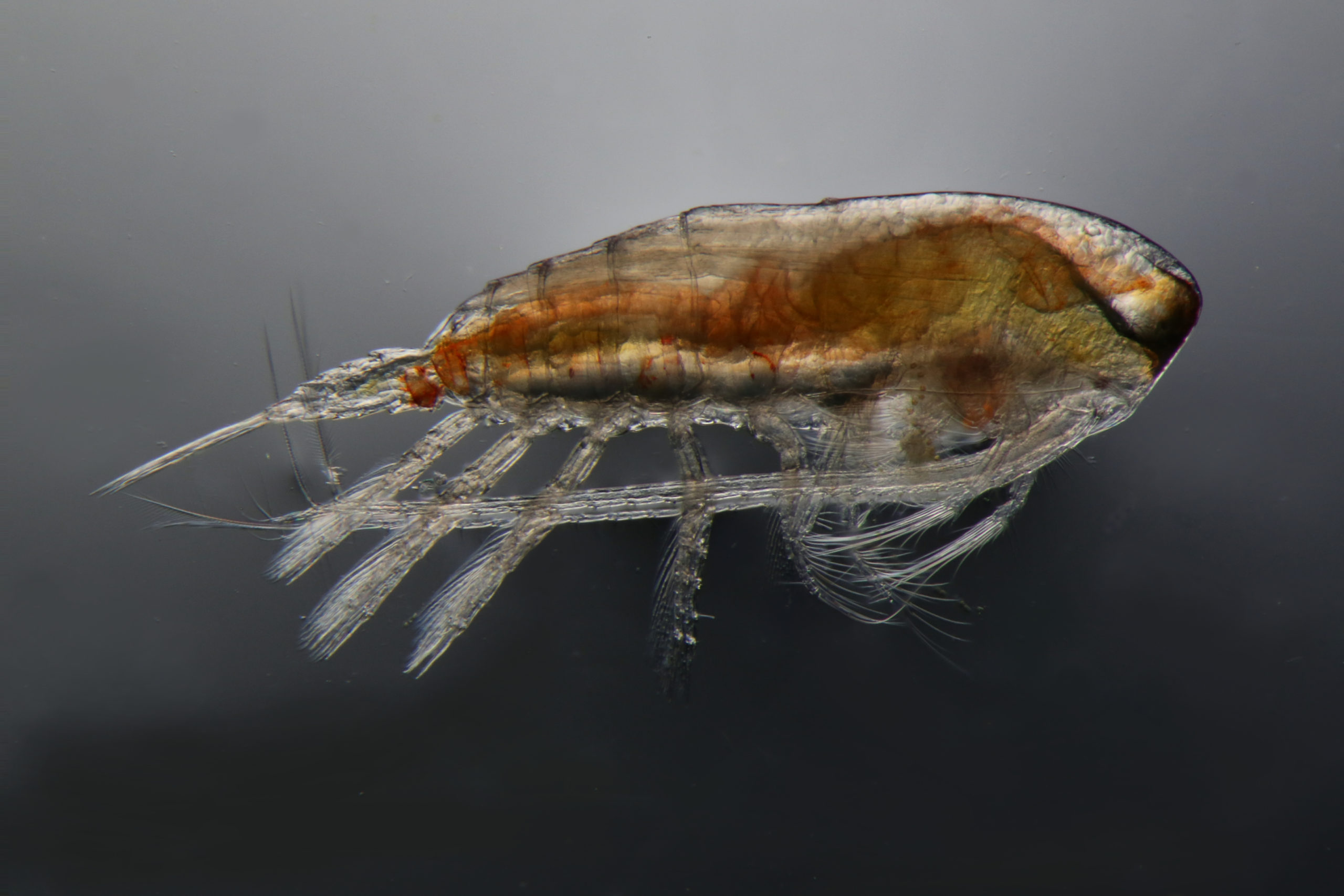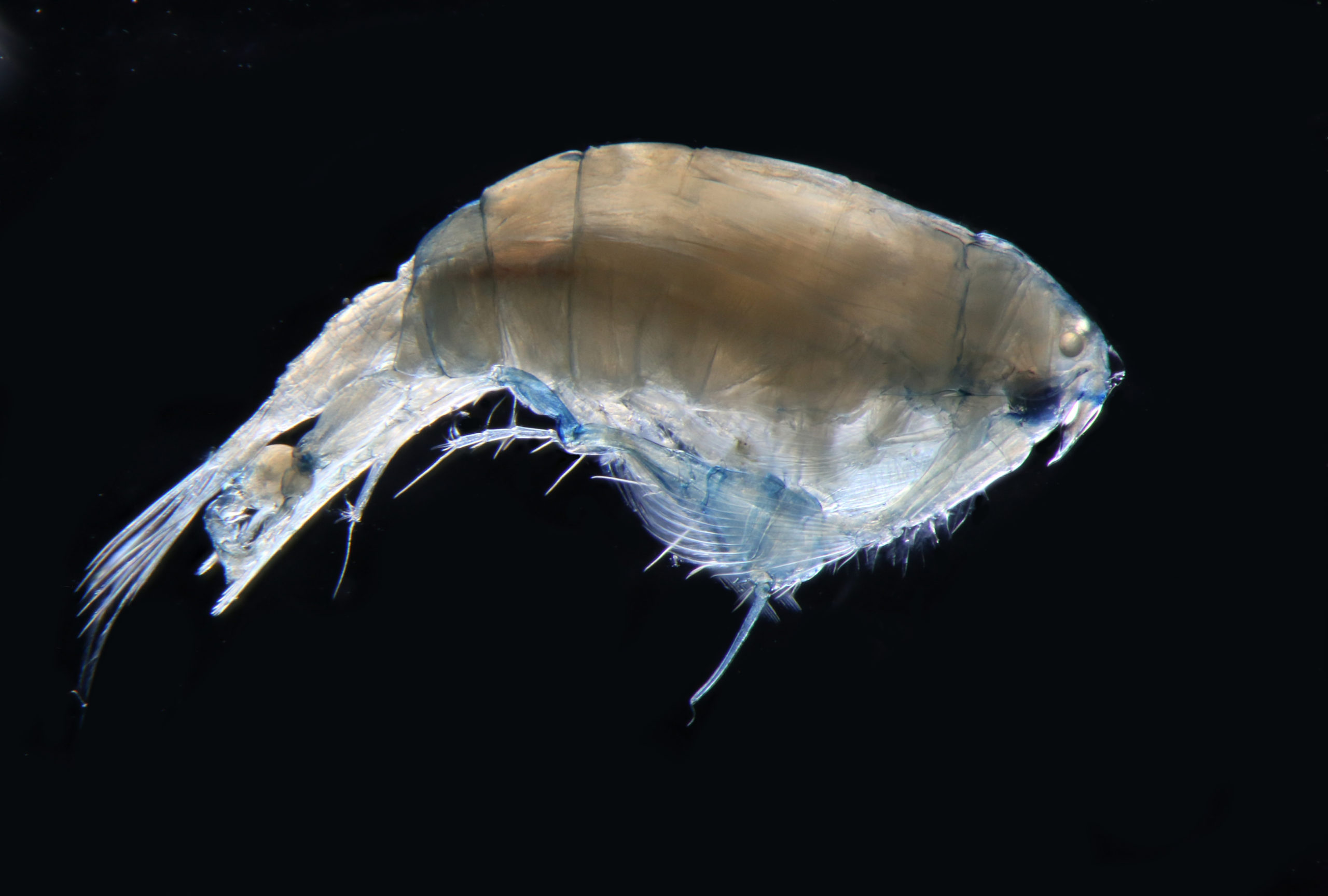
Our scientists applied Bergmann’s Rule for marine copepods. Image: Marine copepod from the genus Calanoides, taken by Julian Uribe-Palomino, IMOS-CSIRO.
It’s the first day of spring. After the cold temperatures of winter recede, we are starting to see buds bloom and trees shoot with new growth.
Outside of these seasonal variations, what other effect may temperature have on an animals’ biology and evolution? It’s known as Bergmann’s Rule. We explain what it is and how it impacts marine copepods, one of the most important creatures in the ocean.
What is Bergmann’s Rule?
In 1848, German biologist Carl Bergmann observed that animals of a similar group grew larger at colder temperatures.
After comparing similar animals at different places around the world, he noticed animals in cold climates were large and animals in warm climates were small.
As a result, he created Bergmann’s Rule which states that body size increases from the equator towards the poles.
Think about bears as an example. Polar bears in the arctic are much larger than sun bears living in the tropical forests of South-East Asia.
We showed Bergmann’s Rule fits marine copepods
It turns out Bergmann’s Rule fits a lot of studies in mammals, birds, reptiles and amphibians. But does it work across other animal groups?
Our researchers put Bergmann’s Rule to the test in zooplankton. These are the tiny animals that drift throughout the oceans providing a rich food source for many fish and marine mammals.
We conducted a global analysis of tiny crustaceans called copepods, which make up most of the zooplankton on Earth. Copepods can be found in nearly every saltwater and freshwater habitat on Earth. They are also arguably the most abundant animal on Earth, perhaps even more abundant than insects.
Supporting Bergmann’s Rule, we found temperature did predict copepod size.
We found copepods decreased in size by nearly 44 per cent across a range of temperatures from minus 1.7 to 30 degrees Celsius.
The largest copepods lived in colder waters and the smaller copepods in warmer water.

However, we also noted that food availability also influenced body size. Image: Pontella cristata, taken by Julian Uribe-Palomino, IMOS-CSIRO.
Does size matter?
Body size plays a big role in the physiology and ecology of organisms. Additionally, size and temperature affect processes such as respiration, metabolism and movement.
Larger animals have a smaller surface area relative to body size and small animals have a large surface area relative to body size. So this surface area influences how temperature may affect animals.
For warm-blooded animals like mammals that need to maintain a constant body temperature, having a small surface area to body size can be an advantage in the cold. This may be why they grow larger in colder climates.
But for cold-blooded animals like copepods, would they still find a size advantage at colder temperatures? Or may other factors be at play?
Our studies showed that copepods followed Bergmann’s Rule where temperature influenced body size. However, we also noted that food availability also influenced body size.
Ecological impact of a warming climate
An organism’s size can also affect ecological balances in the food chain, through what it eats and what eats it! So the changing temperature of global oceans will likely influence the size of the copepods in the ocean.
In a warming ocean, smaller copepod species are likely to dominate. This will decrease global zooplankton biomass impacting other animals further up the food chain.
Under a high emissions scenario for climate change, our study predicts global zooplankton biomass could be reduced by around 6 per cent because of Bergmann’s Rule. So smaller biomass of copepods could potentially reduce the food supply for dependent fisheries on a global scale.
Our evidence in copepods supports Bergmann’s Rule as a unifying principle of ecology. Ecology is a complex science. Using rules like this, which underpin forces placed upon ecosystems, we can build better models of ecological systems. These models can then be used to help us understand the impact of a changing climate on marine ecosystems.
Testing Bergmann’s Rule in marine copepods, out today, is on the cover of the September issue of Ecography.


3rd September 2021 at 2:30 pm
Hello Allan, thank you very much for your question. Both images correspond to two adult calanoid copepods. Calanoides image is a female and Pontella cristata is a male. The section that looks like a tail in both specimens is actually the abdomen and the part of the body that carries the legs is what we call the cephalothorax. Males of several calanoid copepod have a highly modified last pair of legs (leg 5) that looks like a modified hook. This leg is used for the male to grab the female during mating. This leg 5 is what looks like a ‘baby copepod’ under the ‘tail’ of that animal. The blue thing that looks like an eye is just pigmentation on the base of that hook-like appendage. Also, be aware that many of these calanoid males have one of the antennas highly modified as well.
2nd September 2021 at 4:12 pm
There appears to be a baby copepod located under the tail and rear legs of the larger specimen in the image – you can identify what appears to be an eye, thorax, and tail similar to the main copepod. Alternatively, it could be a case of a diminutive male version that is riding on a larger female version. Do you know what we are looking at here ?